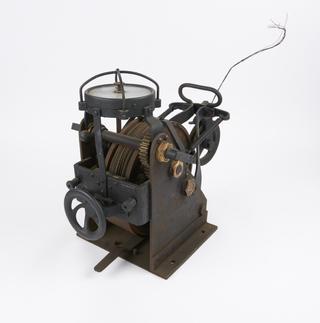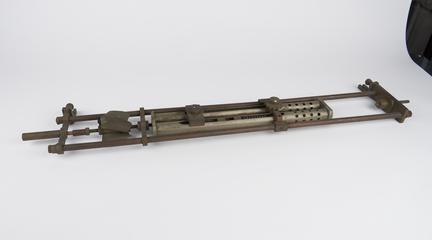
Deep Sea Thermometer, with bimetallic element, designed by Henry Johnson
- Made:
- 1860 in unknown place and United Kingdom
- designer:
- Henry Johnson

Deep Sea Thermometer, self-registering, with bimetallic element, designed by Henry Johnson, England, United Kingdom, about 1860.
Surveyors and navigators struggled to obtain accurate temperature readings from the deep sea because the pressure at depth rendered inaccurate the readings from conventional mercury thermometers. This thermometer instead had bimetallic strips of brass and steel as its element. As the strips flexed under changing temperature they moved an index across a graduated dial and also pushed pins to the extremes of temperature reached.
Johnson believed that his thermometer did not require any pressure correction but like most mechanical devices it was unreliable in deep water, and it was eventually replaced in favour of liquid thermometers with pressure-protected bulbs.
Details
- Category:
- Oceanography
- Object Number:
- 1876-817
- Materials:
- brass (copper, zinc alloy), iron and copper (metal)
- Measurements:
-
overall: x 395 mm x , 51 mm, .89kg
- type:
- thermometer
- credit:
- Admiralty Hydrographic Department




